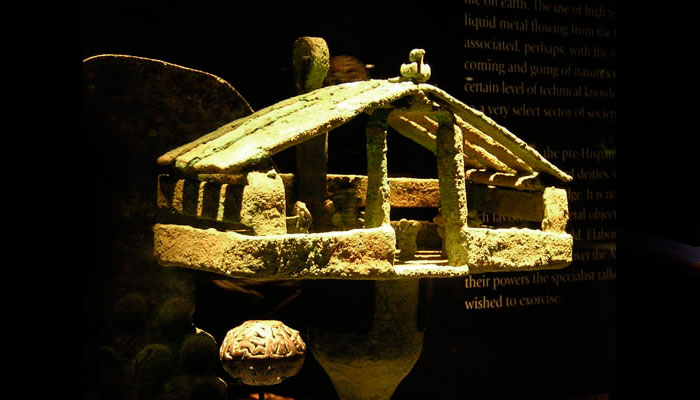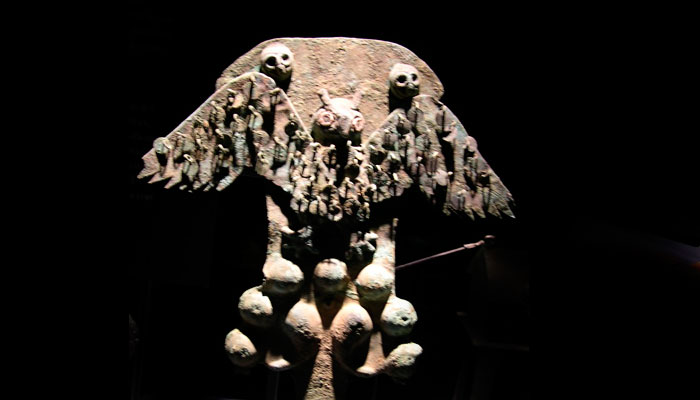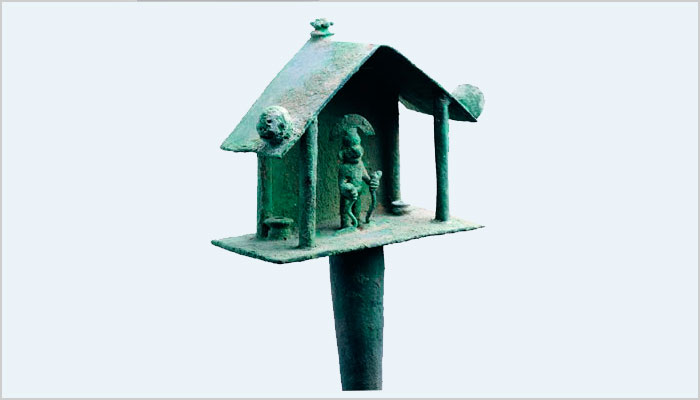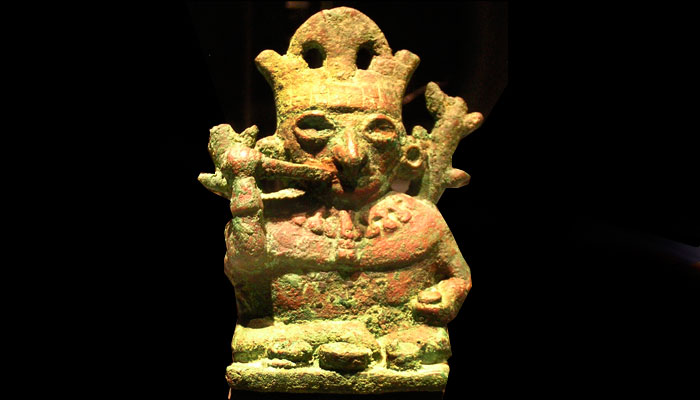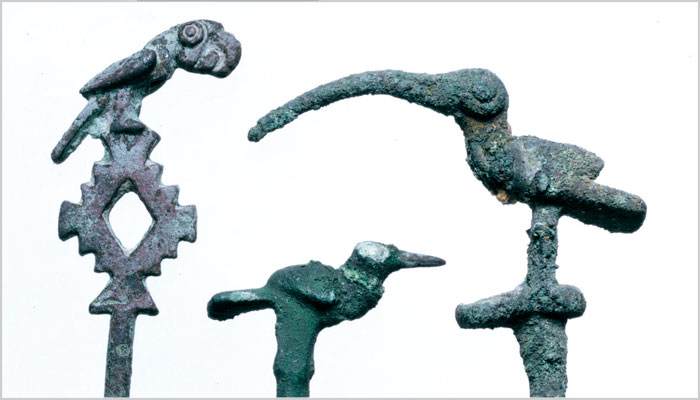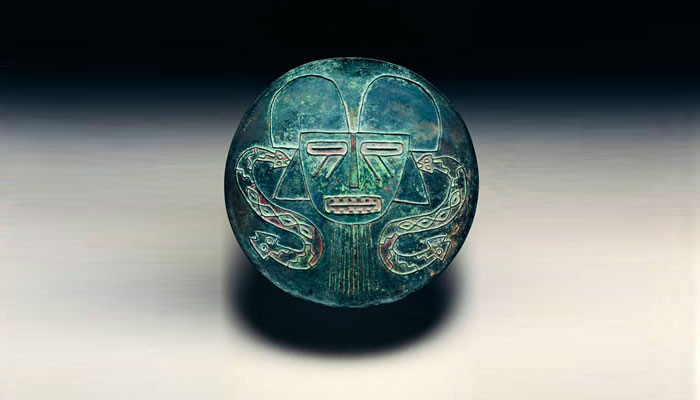The Art of Copper in the Andean World – 2004
- From stone to jewel
- Metal tools
- Chromatic palette of copper
- Metallic sounds and glitters
- Bronze bells
- Metals for taking away life
- Copper on the shaman’s altar
- Copper in the andean iconography
- Metallic bodies
- The face of death
- Food for men
- Food for the gods
- The power of the cailles
- Epilogue
- Galería de fotos
Copper on the shaman’s altar
Copper participated actively in the dissemination of religious concepts of pre-Hispanic societies because of its intrinsic physical qualities, such as its shine and color, which could be modified with alloys. Its plasticity allowed objects to be endowed with meaningful representations of the sacred message. Unlike other materials, copper was an exceptional product, containing the power of the celestial deities and possibly the mysteries of life on earth. The use of high temperatures for the smelting process and the liquid metal flowing from the furnace and shining in the crucible could be associated, perhaps, with the volcanoes, the mountains and the eternal coming and going of nature’s cycles. Its complex production required a certain level of technical knowledge and training, that was probably restricted to a very select sector of society.
In this picture, the pre-Hispanic metallurgists appear as intermediaries between humans and deities, who are the owners of technical know-how and esoteric knowledge. It is not unusual, therefore, that the shamans made such lavish use of metal objects in their sessions of communication with the supernatural world. Elaborate bronze scepters, clubs and cutting instruments presided over the Andean shaman’s ritual mesa, or, altar. Through their powers the specialist talked with the spirits and fought with those he wished to exorcise.




































